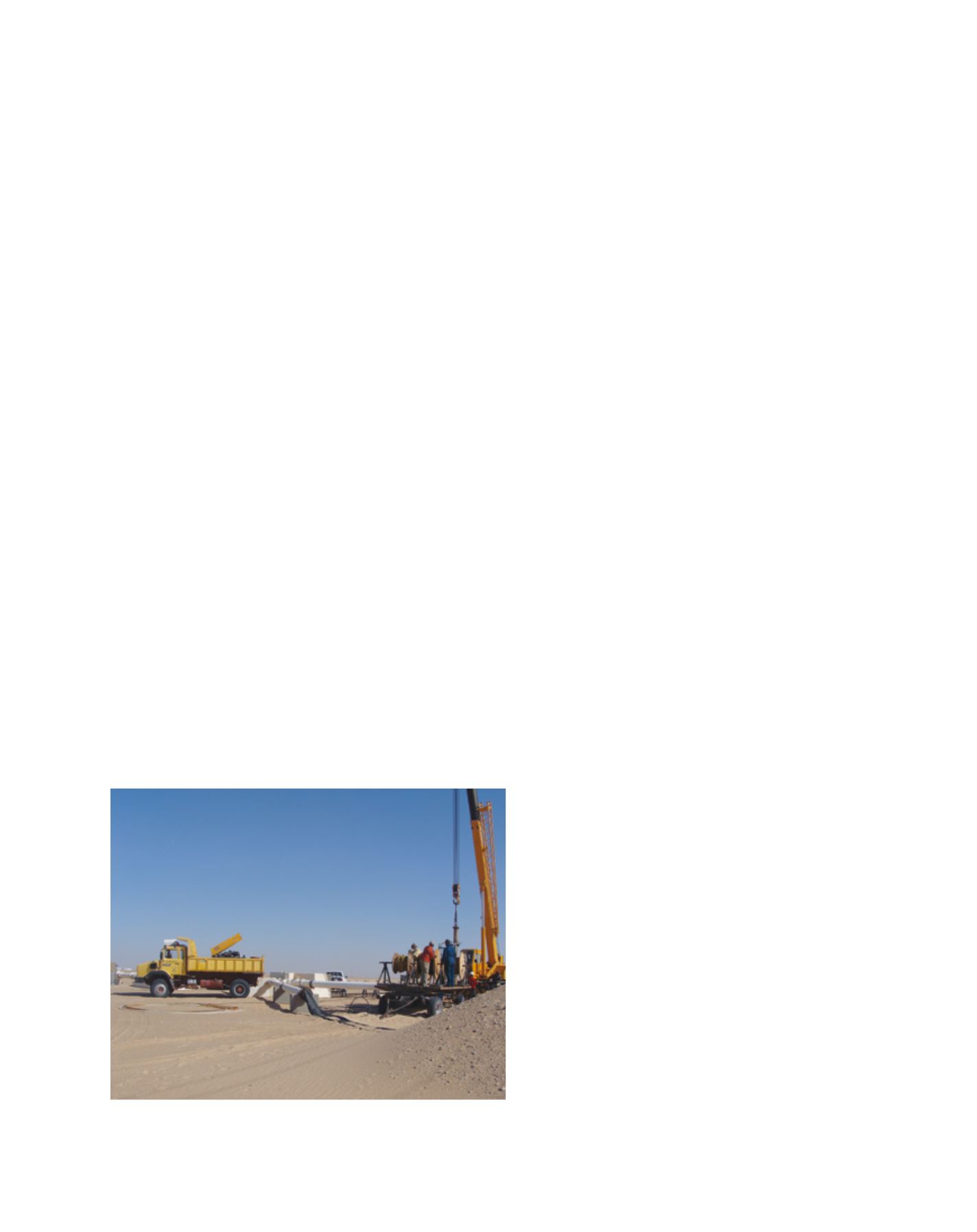

[
] 86
T
ransboundary
W
ater
M
anagement
The project succeeded in defining the technical param-
eters of the aquifer system and in building a common
geographic information system controlled data base.
A mathematical model to simulate aquifer response to
future development schemes was developed for later
use by the water authorities in the three countries as a
valuable management tool.
At the end of this phase, the three countries signed an
agreement to establish a consultation mechanism to be
hosted by the Sahara and Sahel Observatory in Tunisia
and financially supported by the member countries.
A Coordination Unit was appointed in 2002 and was
commissioned to carry out the following tasks:
• manage and update the data base and the
simulation model
• develop and monitor a reference observation network
• process, analyse and validate data
• develop databases on socioeconomic activities
related to water use
• develop and publish indicators on the use of
water resources
• promote and facilitate the conduct of joint studies
and research
• formulate and implement training programmes
• update the NWSAS model periodically.
The NWSAS Project – Phase 2
Under phase 2, complementary studies covering related
hydrogeological components were conducted. These
were studies of the Libyan-Tunisian Gefara Plain aquifer
system; the Algerian and Tunisian Shotts; the Western
Erg in Algeria; and a socioeconomic study.
The NSAS Joint Commission and the NWSAS
Consultation Mechanism represent a step on the right
track for the sound management of transboundary
aquifers in the region. However, more efforts should
be devoted to strengthening the technical capac-
ity of the competent institutions with special focus
on governance, transparency and legislation. Future
initiatives will primarily focus on securing political
and financial support; periodical updating of databases
and models; and harmonizing legislation and policies.
A regional centre
In recognition of the importance of sound management
of shared aquifers, Libya has requested the International
Hydrological Programme (IHP) council to establish a
regional centre under the auspices of the United Nations
Educational, Scientific and Cultural Organization
(UNESCO). This will be devoted to the management of
shared aquifer resources in Africa and the Arab region,
with the aim of providing training facilities to African
experts and organizing seminars and meetings to facili-
tate the dissemination of knowledge among African
countries. During its fifteenth session in June 2002, the
Intergovernmental Council of IHP adopted resolution
XV-10 welcoming the establishment of the centre. An
agreement for the establishment of the centre was signed
in Tripoli by the Director-General of UNESCO and the
Regional strategy for the utilization of the NSAS
The NSAS Regional Strategy project, launched in 1998, was
financed in its first phase by the International Fund for Agricultural
Development (IFAD) and executed by the Centre for Environment
and Development for the Arab Region and Europe. The project aims
at reviewing previous studies, preparing a regional hydrogeological
study, establishing a common data base and preparing a math-
ematical model to simulate future aquifer behaviour in response
to national development schemes. A second phase of the project
covered the socioeconomic component and was financed by the
Islamic Development Bank.
The NSAS Project
The project was launched in 2005 by the International Atomic
Energy Agency and the Global Environment Facility as executing
agencies and the United Nations Development Programme as the
implementation agency. The long-term goal of the project was to
realize a rational and equitable management of the NSAS for sustain-
able socioeconomic development and the protection of biodiversity
and land resources. The immediate objectives are to strengthen
and consolidate the management consultation mechanism between
the four countries; to expand, update and consolidate the common
database and mathematical model; and to create an enabling envi-
ronment to secure sustainable management of the NSAS.
Consultation Mechanism for the NWSAS
Likewise, cooperation between Libya, Algeria and Tunisia in manag-
ing shared aquifers dates back to the mid 1970s in the form of
bilateral and trilateral committees for the exchange of hydrogeo-
logical information and the coordination of planned development
activities. This collaboration resulted in the creation of a permanent
Consultation Mechanism for the NWSAS. Key achievements include
the implementation of the two phases of the NWSAS project.
The NWSAS Project – Phase 1
Phase 1 of the NWSAS project started in July 1999 and was initially
financed by the International Fund for Agricultural Development.
Coordinated joint management of Libya’s shared aquifer systems is achieved through
multilateral cooperation mechanisms
Image: GWA Libya


















